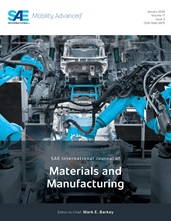To warrant the substitution of traditionally used structural automotive materials with titanium alloys, the material substitutional and redesign advantages must be attainable at a justifiable cost. Typically, during material replacement with such ‘exotic’ aerospace alloys, the initial raw material cost is high; therefore, cost justification will need to be realized from a life-cycle cost standpoint. Part I of this paper highlighted the redesign, fabrication, and validation of an automotive component. Part II details the particulars of constructing the total life-cycle cost model for both prototypes (P1, P2). Considerations in the model include adaptation to a high volume production scenario, availability of near-net size plate/bar stock, etc. Further, response surfaces of fuel costs savings and consequent life-cycle costs (state-variables) are generated against life-cycle duration and unit fuel price (design-variables) to identify profitable operating conditions. In conclusion, it is evident that total life-cycle costs (primary metric) are closely comparable to that of the original component, thereby cost-justifying the redesigns as well as substantiating the practicality of replacement.
